





Landmarks
A physical route traces the original shoreline from the Castle of Good Hope
in the east to the V&A Waterfront in the west. But the route is not only
about the physical line between land and sea.
Rather it connects the geological, natural, historical and social markers
that form the full narrative of the city’s — and the country’s — history.
Follow the physical markers along the route: look for the blue ceramic tiles along the way.
Download the VoiceMap before you start to explore the route.
As you walk, you’ll be immersed in the sights and sounds of the original shoreline.
Over time, this project will grow to incorporate other landmarks
whose stories are revealed as an integral part of the original shoreline’s history.
The founding landmarks are listed here.
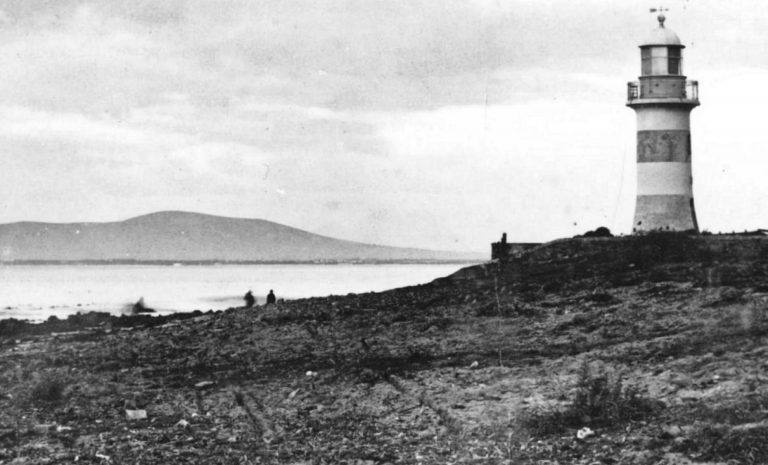
Just beyond the end of the VoiceMap route, visit the Old Mouille Point lighthouse. This is the westernmost point on the Original Shoreline Route. Its remains can be found within the grounds of the Cape Peninsula University of Technology’s Hotel School. It was built in 1842, but its light was eventually extinguished in 1908. Find out why the lights went out here.
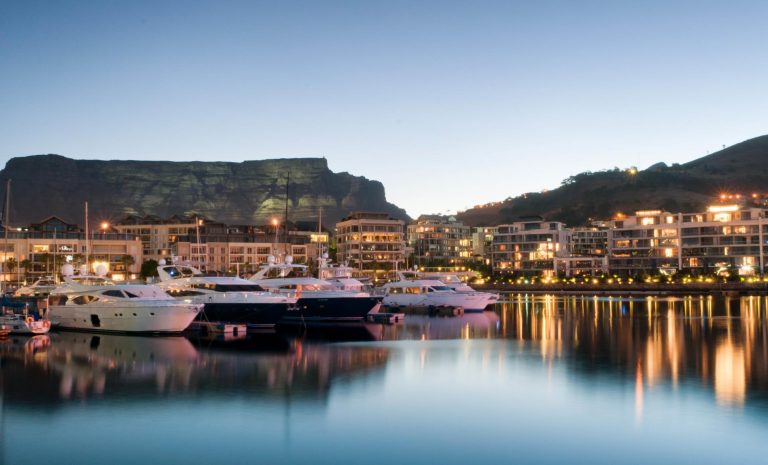
V&A Waterfront
Various landmarks within the V&A Waterfront precinct lie on or adjacent to the original shoreline. Landmarks include: Ferryman’s Freehouse / Mitchell’s Scottish Ale House, the Union Castle Building housing the Iziko Maritime Centre, the Clock Tower, Chavonnes Battery and the old Grain Silos. Find out more about the history of one of Africa’s most popular mixed-use destinations.
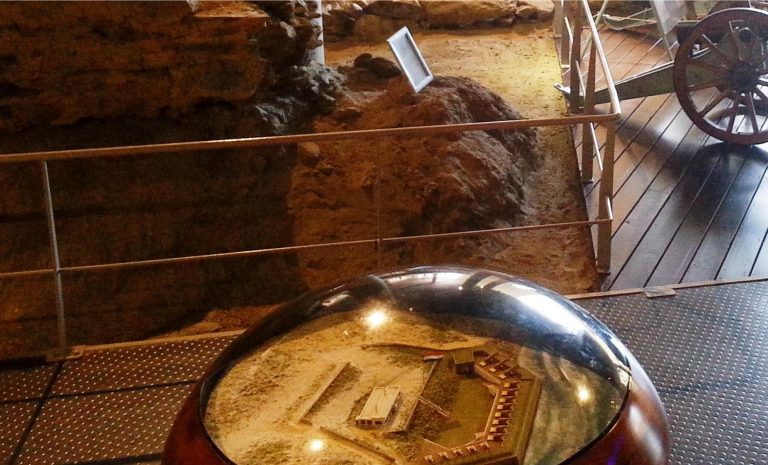
Chavonne’s Battery
Chavonne’s Battery was constructed on the original shoreline between 1714 and 1725 as a series of coastal defences. It’s the only place you can still touch sand from the original shoreline. Find out more here.
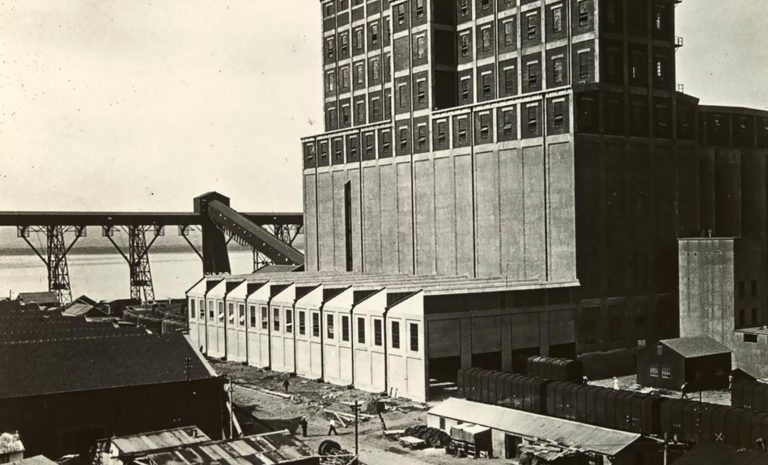
The Grain Silos
The historical Grain Silo was built on the original shoreline in 1923. In 2017, it was transformed into a contemporary art museum. During construction, a shipwreck dated between the late 1700s and 1820s, titled the Grain Silo wreck, was recovered from under the parking lot, along with some remarkable artefacts. Find out more about the silo’s history, including the artefacts found during the excavation.
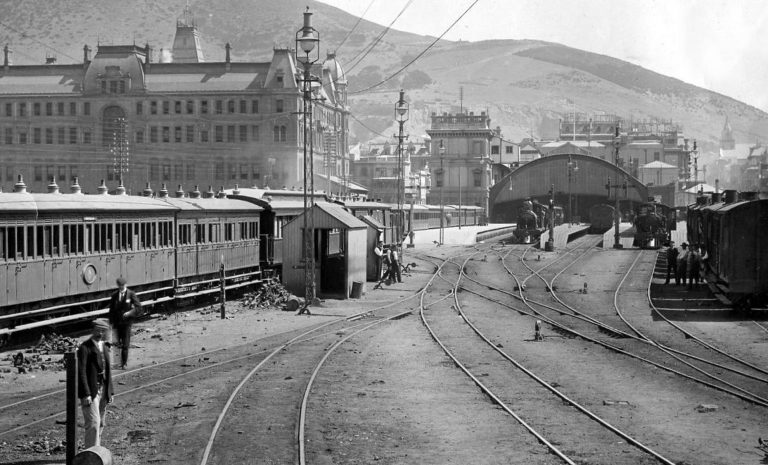
Cape Town Station
The Cape Town Station was revamped ahead of the 2010 Football World Cup. Various artefacts were discovered during the renovation, indicating the building’s proximity to the original shoreline.
Find out which historical artefacts are still firmly rooted to the ground, and more of the station’s history here.
Pass through Roggebaai and Jetty Square, which were once thriving centres of the fishing trade, where fishermen sold the fruits of their catch to buyers on the beach. Walk through Pier Place, which was underwater before the reclamation.
Check out the cannons standing sentry at Amsterdam Battery over the canal, and pass the working dry dock, where ships are still sent for repairs before their onward voyages.
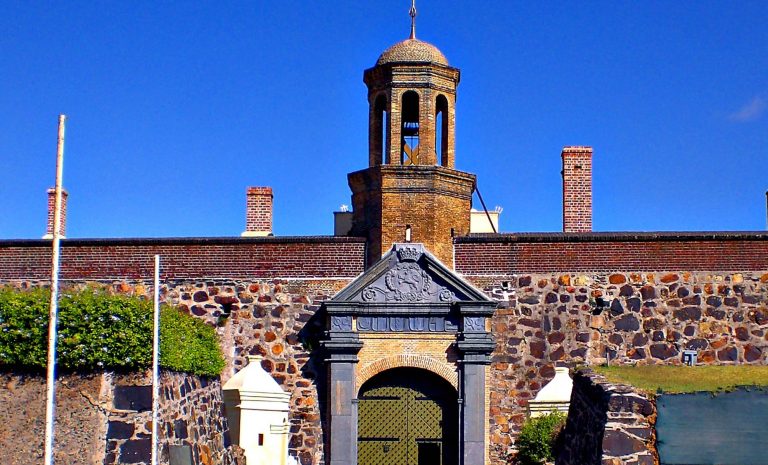
Castle of Good Hope
Before land reclamation started in the 1930s, the tide would wash up to the walls of the Castle. The Castle’s original entrance, which now leads on to Strand Street, couldn’t be used when water levels rose, especially in spring and high tides.
Find out more of the Castle’s military and social history here.
Don’t miss Cape Town City Hall — where Nelson Mandela gave his first speech as a free man when he was released from 27 years in prison in 1990; and Grand Parade, which has been a gathering point of protest and celebration over the years.
You’ll find the ruins of an ancient reservoir, artworks depicting the first colonial arrivals, and places along the route that were once submerged under water before Cape Town’s shoreline was reclaimed in the 1930s.

Grand Parade is the main public square in Cape Town. It was the site of the original fort built by Dutch colonialists in 1652. Today it is a gathering point for large events such as the historic speech by Nelson Mandela when he was released from prison in 1990. Find out what other notable moments have been experienced on the Grand Parade here.

If you want to find out more about the shipping lines, ships and shipwrecks that shaped Cape Town’s maritime history, you’ll find it at the Iziko Maritime Centre.
End the tour at the edge of the ocean, where waves crash over the dolosse, a South African invention used all over the world to break the force of the endless tide.
Mouille Point Lighthouse (at Granger Bay)
Just beyond the end of the VoiceMap route, visit the Old Mouille Point lighthouse. This is the westernmost point on the Original Shoreline Route. Its remains can be found within the grounds of the Cape Peninsula University of Technology’s Hotel School. It was built in 1842, but its light was eventually extinguished in 1908. Find out why the lights went out here.
V&A Waterfront
Various landmarks within the V&A Waterfront precinct lie on or adjacent to the original shoreline. Landmarks include: Ferryman’s Freehouse / Mitchell’s Scottish Ale House, the Union Castle Building housing the Iziko Maritime Centre, the Clock Tower, Chavonnes Battery and the old Grain Silos. Find out more about the history of one of Africa’s most popular mixed-use destinations.
Chavonne’s Battery
Chavonne’s Battery was constructed on the original shoreline between 1714 and 1725 as a series of coastal defences. It’s the only place you can still touch sand from the original shoreline. Find out more here.
The Grain Silos
The historical Grain Silo was built on the original shoreline in 1923. In 2017, it was transformed into a contemporary art museum. During construction, a shipwreck dated between the late 1700s and 1820s, titled the Grain Silo wreck, was recovered from under the parking lot, along with some remarkable artefacts. Find out more about the silo’s history, including the artefacts found during the excavation.
Cape Town Station
The Cape Town Station was revamped ahead of the 2010 Football World Cup. Various artefacts were discovered during the renovation, indicating the building’s proximity to the original shoreline.
Find out which historical artefacts are still firmly rooted to the ground, and more of the station’s history here.
Pass through Roggebaai and Jetty Square, which were once thriving centres of the fishing trade, where fishermen sold the fruits of their catch to buyers on the beach. Walk through Pier Place, which was underwater before the reclamation.
Check out the cannons standing sentry at Amsterdam Battery over the canal, and pass the working dry dock, where ships are still sent for repairs before their onward voyages.
Castle of Good Hope
Before land reclamation started in the 1930s, the tide would wash up to the walls of the Castle. The Castle’s original entrance, which now leads on to Strand Street, couldn’t be used when water levels rose, especially in spring and high tides.
Find out more of the Castle’s military and social history here.
Don’t miss Cape Town City Hall — where Nelson Mandela gave his first speech as a free man when he was released from 27 years in prison in 1990; and Grand Parade, which has been a gathering point of protest and celebration over the years.
You’ll find the ruins of an ancient reservoir, artworks depicting the first colonial arrivals, and places along the route that were once submerged under water before Cape Town’s shoreline was reclaimed in the 1930s.
Grand Parade
Grand Parade is the main public square in Cape Town. It was the site of the original fort built by Dutch colonialists in 1652. Today it is a gathering point for large events such as the historic speech by Nelson Mandela when he was released from prison in 1990. Find out what other notable moments have been experienced on the Grand Parade here.
Iziko Maritime Centre
If you want to find out more about the shipping lines, ships and shipwrecks that shaped Cape Town’s maritime history, you’ll find it at the Iziko Maritime Centre.
End the tour at the edge of the ocean, where waves crash over the dolosse, a South African invention used all over the world to break the force of the endless tide.
